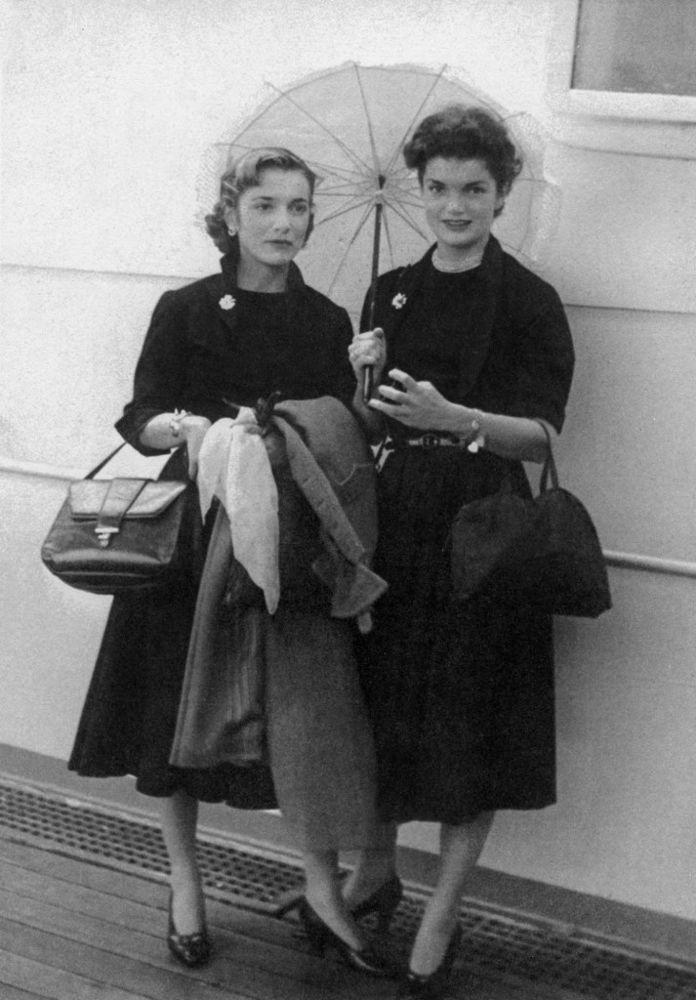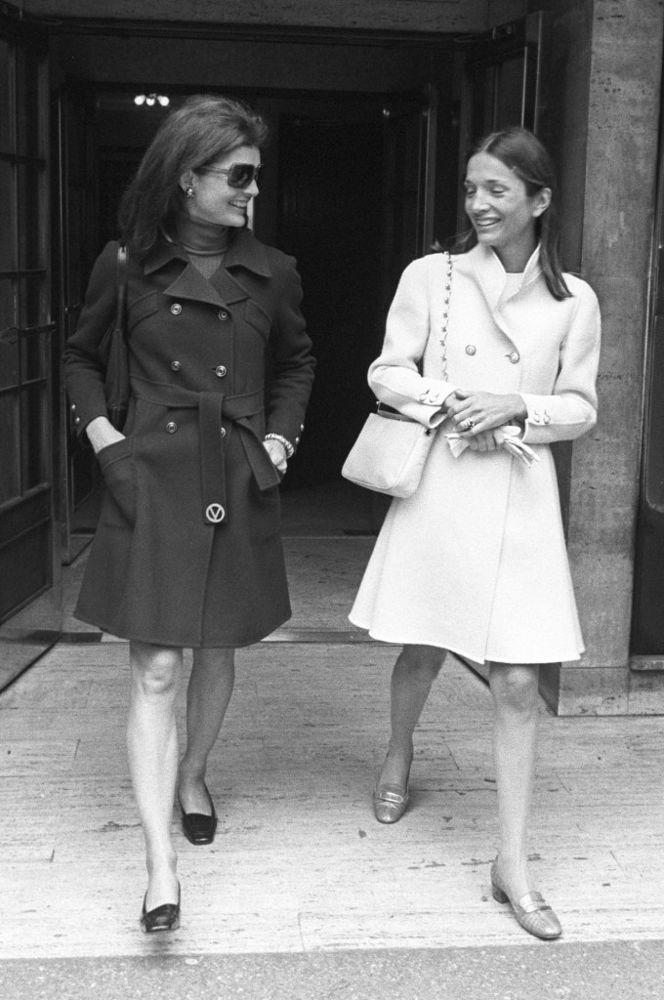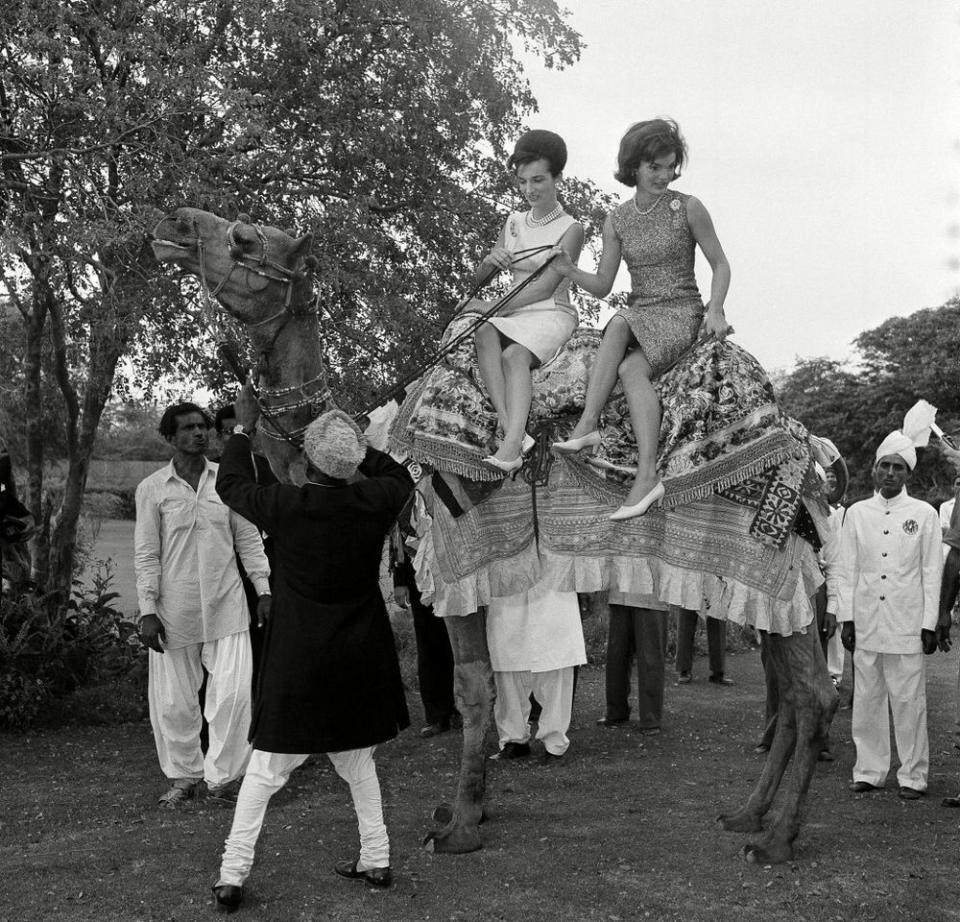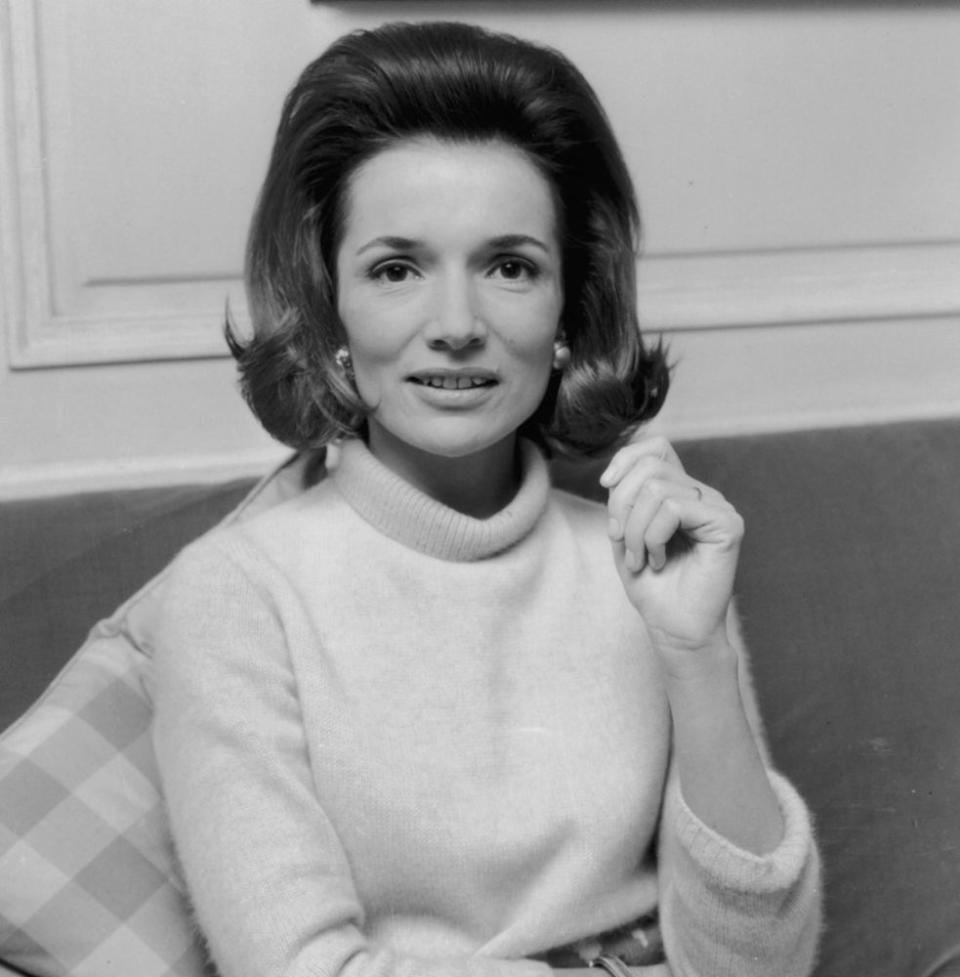The Truth About Jackie Kennedy's Turbulent, Loving and Dramatic Bond with Sister Lee Radziwill
Lee Radziwill — a former princess, interior decorator, actress, fashion publicist, lover of many arts and close friend to many famous artists — outlived nearly everyone else in her life, including her three husbands and the successive scions of the Kennedys, with whom her family became forever intertwined nearly seven decades ago.
“A remarkable girl,” author Truman Capote raved of Radziwill for a 1976 PEOPLE cover story.
Said architect Philip Johnson for the same story: “Her knowledge of people, her warmth, her glow — outgoing and delicious!”
Despite her own long and storied life, studded with its own jet-setting surprises, victories and defeats, Radziwill could not escape comparison with her older sister, Jacqueline Kennedy Onassis, wife of President John F. Kennedy and the most famous first lady of the 20th century.
An icon herself, Jackie’s successes in some ways seemed perfectly sized to overshadow her younger sister, who died last week at her New York City home at age 85.
Radziwill was a fixture of the world’s best-dressed lists, but Jackie’s style has been celebrated in museums. And Jackie’s second husband, Greek shipping tycoon Aristotle “Ari” Onassis, had been quite close to Radziwill before he wed her big sister. (“I am very happy to have been at the origin of this marriage,” Radziwill told reporters at the time.)
Born not quite four years apart, the only daughters of Janet Norton Lee and stockbroker John Vernou “Black Jack” Bouvier lived most of their lives in the spotlight. Their relationship has long been the subject of curiosity.
The two could be quite close, dating back to their childhood in New York City and East Hampton and attending Miss Porter’s School. They shared a magical summer in Europe when Radziwill was 18, touring Italy and Paris — a trip they recounted in a 1974 memoir.
But much later in life, they could go years with the barest amount of contact. They finally reconnected in the last months of Jackie’s life, in 1994.
They lived through turbulent times and had a turbulent bond to match.
“It was never sort of black and white,” Kennedy biographer J. Randy Taraborrelli tells PEOPLE. “There were always shades of grey, and when you try to paint that relationship with a wide brushstroke it never works because there were times when they were very close.”
• For more on the amazing life of Lee Radziwill and her connection to sister Jacqueline Kennedy Onassis, subscribe now to PEOPLE or pick up this week’s issue, on newsstands Friday.


“It’s so perplexing,” says Taraborrelli, author of
. “I think what I like about it is that it is that perplexing — because if you think about it, you know sisters like this and family members like this and maybe in your own family.”
The seeds of their particular connection were sown as girls.
“I think that [their mother] Janet fostered it,” Taraborrelli says. “Janet was all about, ‘You two sisters are all that you have. You have to stick together. You’re all that you have.’ Then after she would give a speech like that, she would take Jackie by the hand and go off with her and leave poor Lee behind. She inadvertently created this competition between Lee and Jackie at a very early age.”
Radziwill was an average student at Miss Porter’s but despised the experience while Jackie excelled. Their father doted on Jackie, who was his lookalike.
For her part, Radziwill told T: The New York Times Magazine in 2013, “My mother endlessly told me I was too fat, that I wasn’t a patch on my sister. It wasn’t much fun growing up with her and her almost irrational social climbing in that huge house of my dull stepfather Hughdie Auchincloss in Washington. I longed to be back in East Hampton, running along the beaches, through the dunes and the miles of potato fields my father’s family had owned.”
Taraborrelli says the competition, though largely one-sided, continued between Radziwill and Jackie “throughout their young lives.”
“Who’s going to marry first? Who’s going to be more popular? Who’s going to be in more magazines?” he says. “All of that suddenly came to a crashing halt when Jackie became first lady. … Lee [said], ‘How can I compete with that?’ How do you compete with that?”
Taraborrelli continues: “She had so defined herself as being in competition with Jackie that when finally there was no competition, she didn’t even know who she was. Then that marked a new era for Lee Radziwill. That’s when she decided, ‘I’ve got to do something.’ “


“Lee was so self-aware,” Taraborrelli says. “She realized that she needed to do something to distinguish herself from her first lady sister and that’s why she began to experiment in so many different kinds of careers. She was trying to find her own identity.”
Radziwill was a regular presence in the Kennedy White House during the 1,000 days of Camelot. She, like her big sister, had married well: first to Michael Canfield, son of a prominent publisher, in a wedding a few months before Jackie’s; and then in 1959 to Polish Prince Stanislaw Albrecht “Stas” Radziwill.
“Mrs. Kennedy relied on Lee,” Clint Hill, the first lady’s Secret Service agent, and author of
, previously told PEOPLE. “Anytime there was some kind of an event that was crucial, Lee usually was present.”
Radziwill was also a crucial source of support after President Kennedy’s November 1963 assassination, which devastated Jackie and left her in a spiraling depression. Radziwill rushed to the U.S. from her London home.
“She came to Washington. She got there before Stas did, to be with Mrs. Kennedy,” Hill said. “She went with us that following Thursday, which was Thanksgiving Day. We flew up to Cape Cod so that Mrs. Kennedy could talk to the president’s parents.”
Hill recalled that Radziwill “remained with us pretty much during that entire time until Mrs. Kennedy and the children moved out of the White House on Dec. 6th and moved to Georgetown.”
After the president’s funeral, Radziwill reportedly left a note on her sister’s pillow that read “Good night my darling Jacks — the bravest and noblest of all. L.”
For Christmas that year, Jackie joined Radziwill and her family for a trip to Florida. “They would be together privately in the bedroom, and Lee was there, supporting her,” Hill said. “Mrs. Kennedy was in shock.”
“I think Lee was trying to do everything she could to support her, lend an ear if she wanted to talk or hold her hand if she needed that,” he continued. “Whatever it was … She didn’t go out hardly at all during that period of time; remained pretty much housebound for a while.”
In the depth of Jackie’s despair, which biographer Taraborrelli says was “almost cataclysmic,” multiple times Radziwill “had to race over to Jackie’s and flush medicine down the toilet” to save her sister from the toxic mixing of alcohol and pills.
In an effort to provide some brightness to her sister’s life, Radziwill introduced her to Onassis, with whom Radziwill had already had an intimate, years-long relationship. (According to Taraborrelli, they were romantically involved, which Radziwill disputed over the years.)
Once Onassis met Jackie, however, his affections shifted and the two soon wed — by many accounts a wedge between the sisters, though Taraborrelli notes that when Jackie had asked Radziwill about the nature of her younger sister’s connection to Onassis, Radziwill demurred.
“Lee never really sat down with any of these women, even her own mother, to say, ‘I am in love with Onassis, and I want to be with him,’ ” Taraborrelli says.
“They didn’t have these sort of soul-bearing conversations with each other,” he says.
Later, right before her wedding to Onassis, “All Jackie said to Lee at that time was, ‘I need this.’ Lee realized that Jackie, who was suffering from PTSD over Jack, who was drinking and having nightmares and having suicidal thoughts and who was really going through a lot in her lifetime, that yeah, she did need it,” Taraborrelli says.
“If anybody needed Onassis, Jackie Kennedy did. Lee gave him up for her.”
Taraborrelli explains: “She realized that she wouldn’t be able to live with herself if something happened to Jackie and the kids because she would not allow Onassis to be their protector. She abandoned her love for Onassis for her sister rather than take a chance on something happening to her sister and her niece and nephew.”
Jackie had inherited her mother’s belief “that you did not have to settle for the circumstances of your life as they unfolded,” Taraborrelli says. From Janet she learned a “steely determination to get through anything.”
Not her sister. “Lee was a romantic, and this vexed Jackie and Janet many times over,” Taraborrelli says.

In the late ’70s, it was Jackie and Janet who insisted to Radziwill that she get a pricey prenuptial agreement to Newton Cope, a millionaire San Francisco hotelier. But he resisted and the wedding was called off on the very day (though the two still took their planned honeymoon).
After splitting with her second husband, the prince, Radziwill relocated to New York City, only a few blocks from Jackie.
In the ’60s and ’70s, Radziwill grew close with some of the greatest and most stylish artists of her time. Among her friends were ballet star Rudolf Nureyev, conductor Leonard Bernstein, Andy Warhol and author Capote, who encouraged her to embark on an acting career that was widely mocked by critics. (“[They] had written their reviews even before they saw the performance,” Radziwill told PEOPLE in 1976.)
Taraborrelli says that after the 1989 death of their mother, Jackie and Radziwill “had nothing to do with each other.”
But then Jackie was diagnosed with non-Hodgkins lymphoma on the exact day that Radziwill’s son, Anthony, was diagnosed with cancer.
They reconnected in the brief time before Jackie’s death in May 1994.
“There was no possible way that they were ever going to be able to settle 64 years of a challenging relationship and talk about Onassis and talk about their mother and talk about this rivalry and really have this conversation,” Taraborrelli says.
Still, Radziwill was at her sister’s side the day before she passed, when Jackie was then in a deep coma, according to Taraborrelli.
“I love you so much,” Radziwill said. “I always have, Jacks.”
She added, “I hope you know it.”
Notes Taraborrelli: “They were rivals, but also confidantes. In a way, they could understand each other in a way no one else could.”
• Reporting by LIZ McNEIL

